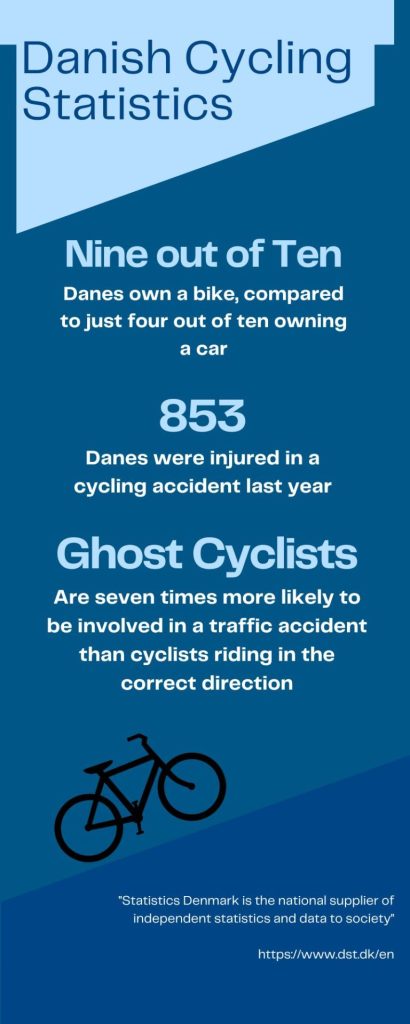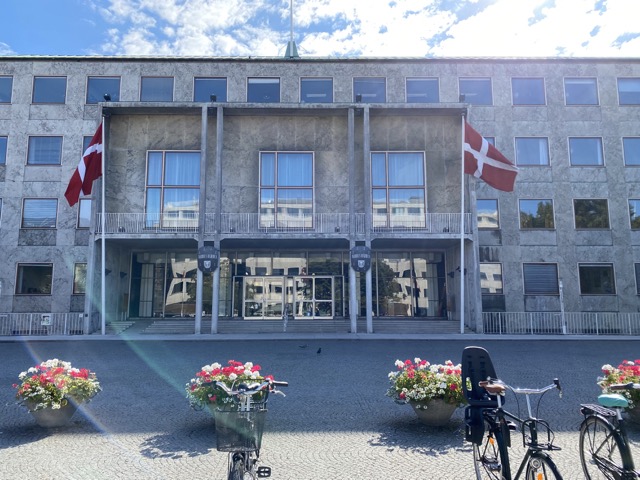In Denmark’s second biggest city, Aarhus, cycling has a spooky side. A report was released late last year by ViaTrafik (a Danish engineering consultant firm) that labelled Aarhus as the epicentre for “ghost cycling” in Denmark. But what action has been taken since the release of this report?
Rachel Jackson reports.

Ghost cycling is a term coined from “ghost driving”, the illegal act of driving in the wrong lane against the flow of traffic. Mobility planner for the Aarhus Municipality, Martin Lov Simonsen, said ghost cycling is a small part of a larger issue of traffic safety and cycling culture in Aarhus.
“If we have too many cyclists who do not follow the rules and are riding on the wrong side of the street we will eventually have some accidents, maybe some fatal accidents,” he said.
“That’s something we have to prevent as far as we can with rebuilding of the city and bicycle infrastructure.”
The ViaTrafik report highlighted Bernhardt Jensens Boulevard as one of the most common places for ghost cycling in Aarhus, where one in five cyclists choose to ride in opposition to traffic during the morning rush period. But Bernhardt Jensens Boulevard is not the only hotspot for ghost cyclists.
Herredsvej Boulevard lies outside Vilhelm Kiers Kollegium, a student dormitory in Aarhus V. The road is wide and difficult to cross due to limited crossings outside the Kollegium’s entrance points. Students can be seen riding their bikes in the opposite direction of traffic every day.
21-year-old students, Sophie and Cathrine, are residents at Vilhelm Kiers Kollegium. Herredsvej Boulevard is part of their daily commute to university or into town.
“It’s really hard to get to the right side of the road because there are blocks in the middle of the road,” Cathrine said. “If you want to cycle out from here you have to go in the opposite direction of traffic.”
If the Municipality installed more crossings on Herredsvej Boulevard, Cathrine believes most people would choose to do the right thing.
“It’s uncomfortable to be the one doing it,” she said. “I hate doing it.”
The Municipality is unable to plan against ghost cycling in certain cases, according to Lov Simonsen. He said cyclists also have a responsibility to change their behaviour.
“I think we can do something about it in the planning phase but in some circumstances the city is unable to plan or do anything against this issue,” he said. “If we have the right amount of crossings on the road it is up to the cyclists to do something,”
Sophie said the limited police presence on Herredsvej Boulevard plays a role in the high number of ghost cyclists. The fine for riding in the wrong lane in opposition to the flow of traffic is 1000 Danish kroner, which she believes is sufficient to deter people when enforced.
“I would never cycle on the wrong side of the road in town because there are police everywhere,” Sophie said. “It’s really expensive to get a ticket, I only do it when I’m outside of town.”
Lov Simonsen said the Municipality has discussed plans to campaign for improved traffic safety and cycling culture in Aarhus, but ghost cycling is an issue that is hard to target on its own.
“I think it’s an issue that’s hard to target, we need to work with the police to plan and campaign in order to encourage people to do the right thing,” he said.
In the meantime, the responsibility will reside with the cyclist to make the right decision.

